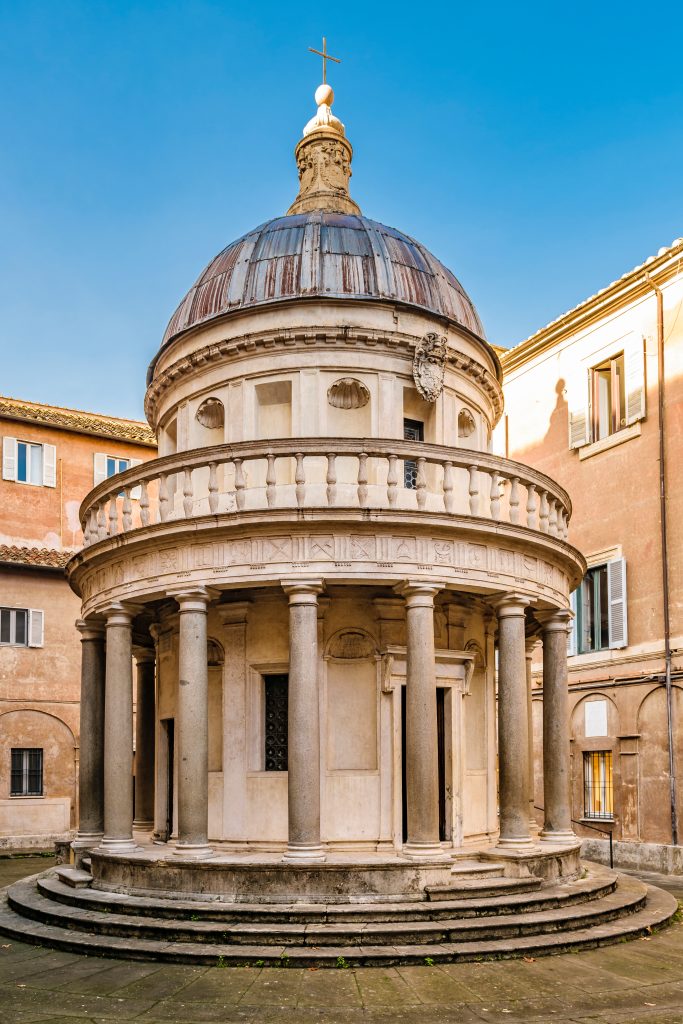Donato Bramante, Tempietto

In 1499, with the downfall of the Sforza in Milan, Donato Bramante moved to Rome. His most original and influential building was the Tempietto. The patrons were King Ferdinand and Queen Isabella of Spain, who also financed Christopher Columbus’ voyage to the New World. Located on the traditional site of Saint Peter’s martyrdom, the Tempietto (literally “little temple”) was a martyrium. Bramante thus combined the traditional circular plan of martyria with round temples he had seen at Tivoli, near Rome, and in Rome itself. He further conformed to the theoretical positions that temples to such gods as Mars and Hercules should be round. This was also consistent with the fiery, heroic character of Saint Peter. The Tempietto itself is too small to hold more than a few pilgrims and was thus seen mainly from the outside. Its circular cella (central room of a temple) is surrounded by steps and a peristyle. The columns are in the Roman Doric (Tuscan) Order, used for the first time since antiquity; the shafts are of granite; and the bases and capitals are of marble. Divided into triglyphs and metopes, the Doric frieze is decorated with instruments of the Christian liturgy that are inspired by pagan ritual objects known from the ancient Roman temple of Vespasian. The balustrade, dome, and lantern (a later addition, although one intended by Bramante) are characteristic features of Renaissance churches.
The harmonious relationship of each part to the other and of each to the whole, as required by Classical and Renaissance art theory, is evident, for example, in the fact that the distance from the ground to the base of the drum equals its width. The Tempietto is now in a cramped space, which makes it difficult to view.[1]
- Laurie Schneider Adams, Italian Renaissance Art, (Boulder, CO: Westview Press, 2001), 330-331. ↵

